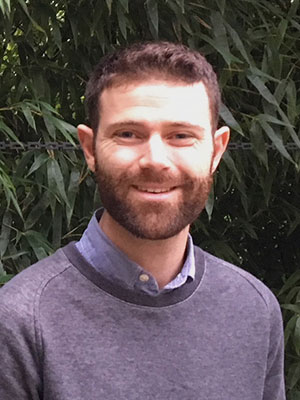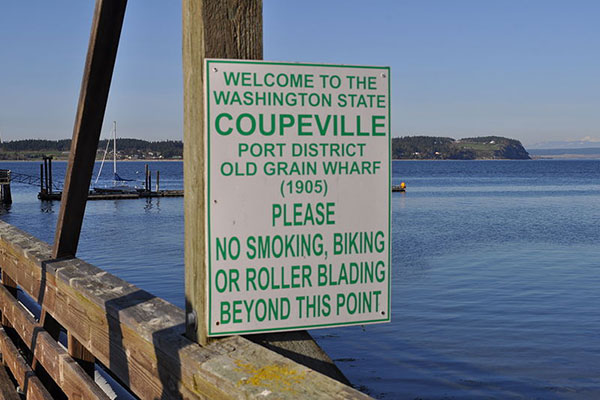On World No Tobacco Day, May 31, we take a look at some of the work done by student researchers to understand tobacco prevention and cessation.
Believe it or not, some cities and counties cannot pass local tobacco control laws that are stronger than those at the state level.
This is due to a relatively unknown rule, called preemption, which keeps local governments in Washington state from effectively regulating menthol and flavored tobacco products or from raising the tobacco-buying age to 21.

“State preemption laws have long been supported by the tobacco industry and are completely contrary to advancing public health,” says Jacob Delbridge, a master’s student at the University of Washington School of Public Health.
For the past two years, he has studied the state’s preemptive status, which was largely determined by a 2005 ruling of the Washington State Supreme Court. It was interpreted by the court that tobacco prevention and control policies had to be enacted at the state level.
“Local health departments feel handcuffed – they can’t adopt more comprehensive, protective and innovative local policies to address the persistent and emerging tobacco-related health issues plaguing their communities,” says Delbridge, a scholar in the Tobacco Studies Program, housed within the School’s Department of Health Services.
Washington state is one of only two states with preemption in all four main policy areas of tobacco control, including advertising, licensure, smoke-free indoor air and youth access. “Basically, we’re the most heavily preempted state in the country, tied with Michigan,” Delbridge says. (View a map of tobacco preemption by state from the Centers for Disease Control and Prevention (CDC).)
These restrictions have 'handcuffed' local ability to respond to innovative tobacco and vaping industry products and marketing, confirms Scott Neal, tobacco prevention manager at Public Health – Seattle & King County. "The lack of local authority to adopt health policy around the sale of tobacco and vapor products continues to support and in some cases may exacerbate our extreme disparities in King County," he adds. "Preemption is an industry sponsored policy for good reason, it keeps all health policy at the state or federal level where the industry’s deep pockets have the most influence."
According to the Public Health Law Center, the tobacco industry and its allies have historically used, and continue to use, preemptive strategies to thwart smoke-free laws, youth access and retailer licensing restrictions, advertising and promotion regulations, and similar policies.
Delbridge worked with the Washington State Department of Health last summer to conduct research and engage with stakeholders on the issue of preemption. A key objective was to educate policymakers on the value of local control to allow for local regulation of tobacco products. Local-level programs and policies are integral to tobacco control, he says.

Delbridge says there is a lack of understanding – even among state legislators – of what preemption is, and what its consequences are. In case studies of states that have added, revised or removed preemption laws, he found that states were more likely to address the issue of preemption as part of other legislation. For example, states issuing a bill to raise the minimum age to 21 may also simultaneously permit locals to take more protective actions that make sense for their communities.
“From licensing to taxation and from restrictions on sales to prevention and cessation programming, tobacco policies are multifaceted,” Delbridge says. “It is a dynamic policy area that will continue to have serious implications for the health of current and future generations.”
According to the CDC, seven states have successfully repealed provisions that preempted local smoking restrictions in some or all settings. They are Illinois, Louisiana, Mississippi, Montana, Nevada, New Jersey and Oregon. Twenty-seven states have passed laws that allow local communities to adopt smoking restrictions that are more protective than the state standard.
For his master’s capstone project, Delbridge is working with the Center for Multicultural Health, a Seattle nonprofit promoting health and well-being in diverse communities, and other organizations in the state to map a way forward for tobacco control policy. He is creating a toolkit for organizations exploring their options for policymaking, such as the initiative and referenda process. Also known as direct democracy, this advocacy avenue has had some success in Washington state. For example, a coalition of Pierce County organizations were responsible for the successful campaign that put Initiative 901 on the ballot on November 8, 2005. It passed with more than 63 percent of the vote. The law prohibits smoking in buildings and vehicles open to the public and places of employment in Washington state.
“What’s happening in Washington is similar to what is happening in the rest of the country,” Delbridge says about emerging issues. “We need policies that prioritize reducing health disparities and we need a broad coalition base to ensure that the populations disproportionately affected by tobacco use are at the decision-making table.”
Here’s a brief look at other work being done by scholars in the Tobacco Studies Program:
- Shahida Shahrir, a PhD student in the Department of Health Services, is looking at smoking cessation strategies for veterans infected with HIV. Using data from the Veterans Aging Cohort Study, she is investigating the population’s smoking habits and use of pharmacotherapies.
- Katherine Garcia-Rosales, a master’s student in the Department of Epidemiology, is also looking at populations at risk for HIV infection. Focusing on men who have sex with men and transgender women in Lima, Peru, she’s investigating whether tobacco, alcohol or other illicit drug use are risk factors for onward transmission of the virus.
- Jessica Elm, from the UW School of Social Work, is examining childhood adversities among American Indians with type 2 diabetes and the association with behavioral health, including smoking. Because smoking is particularly harmful for those with diabetes, this has implications for intervention within primary care and for smoking cessation.
(By Ashlie Chandler)
